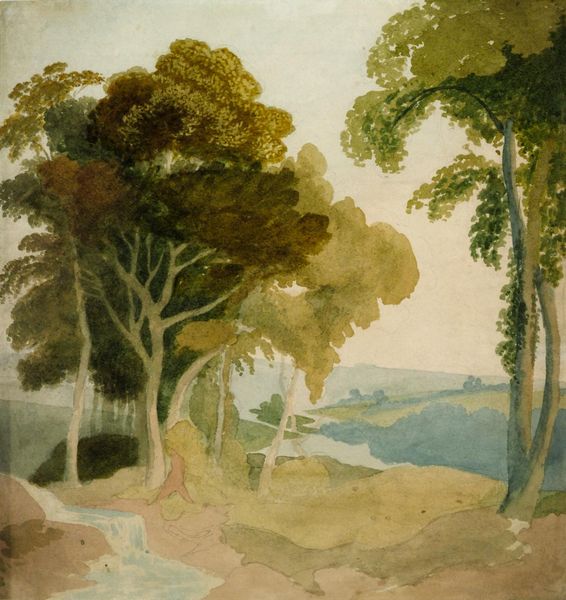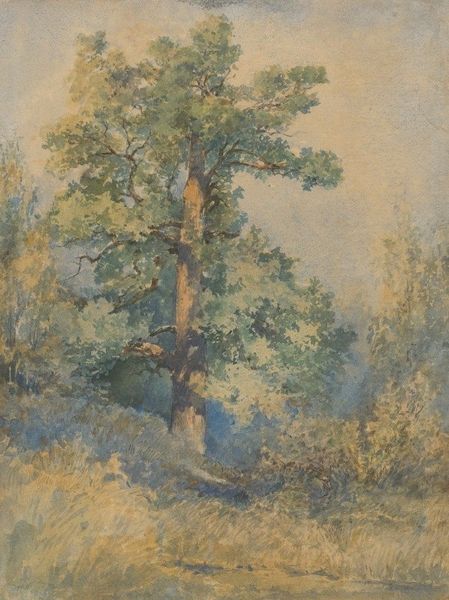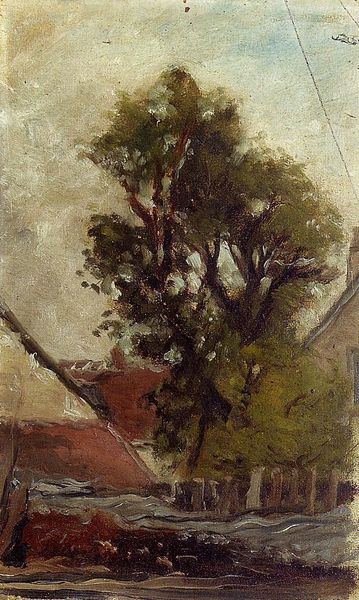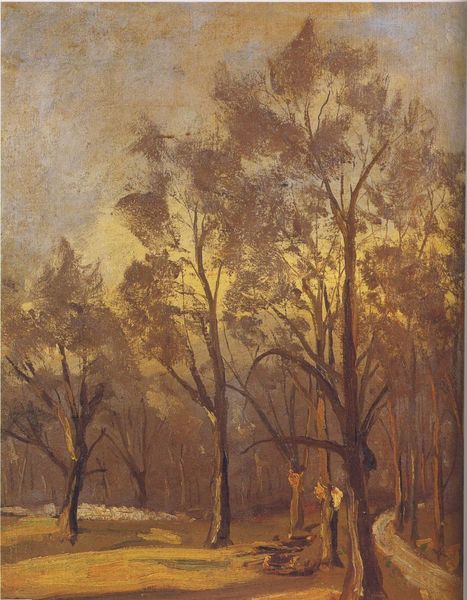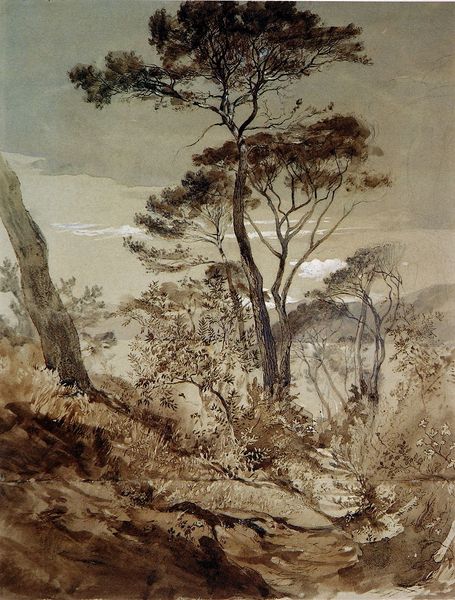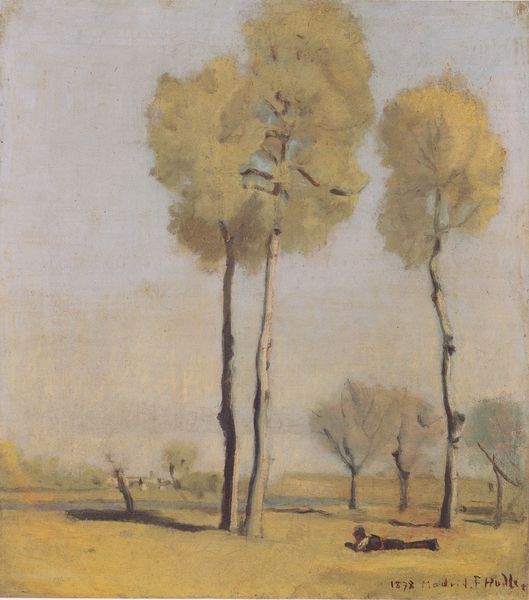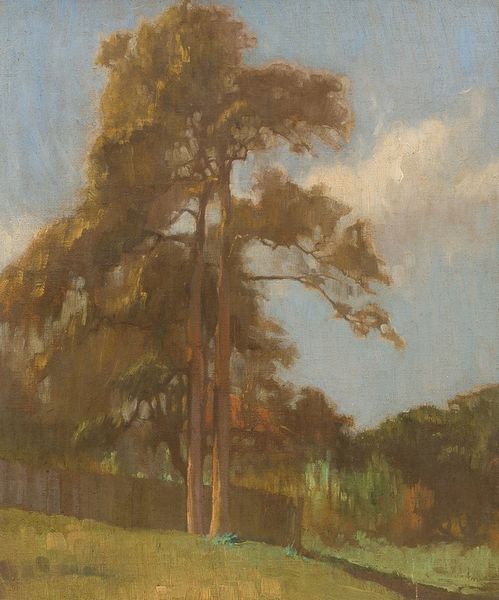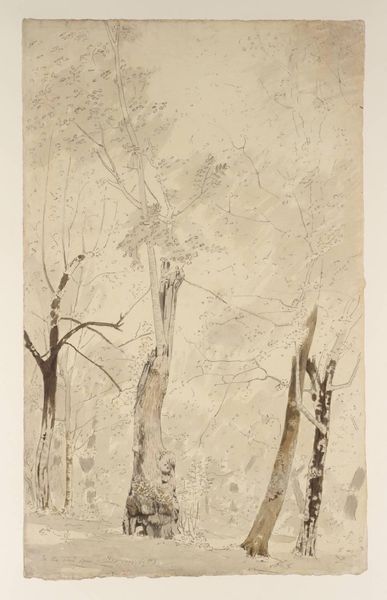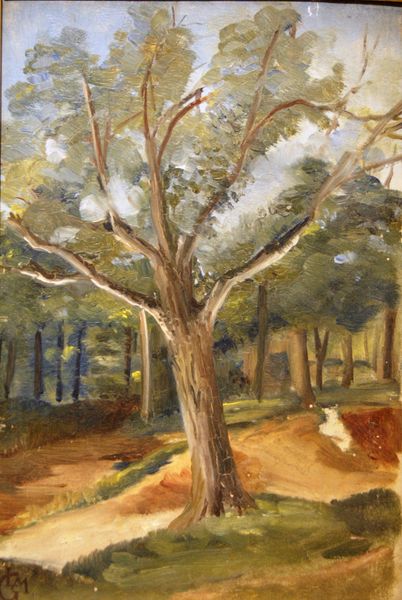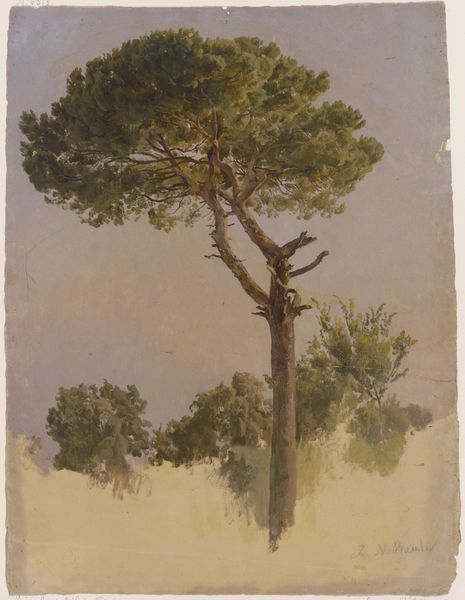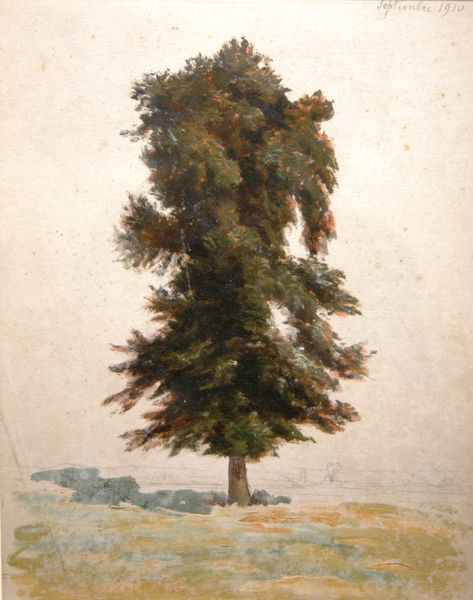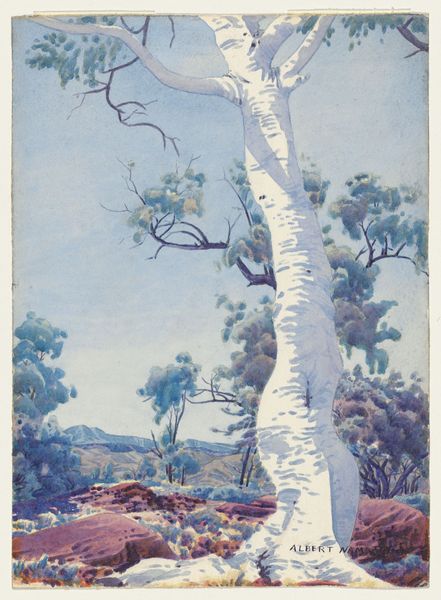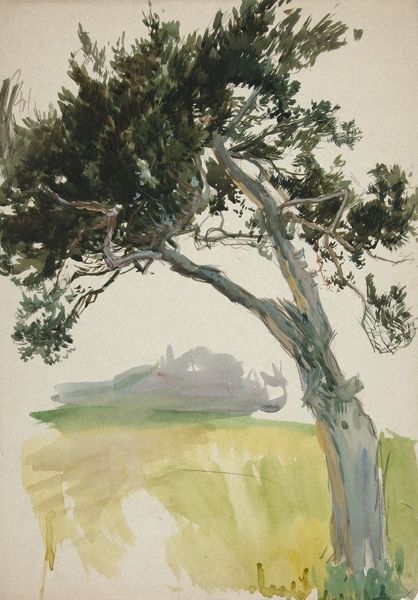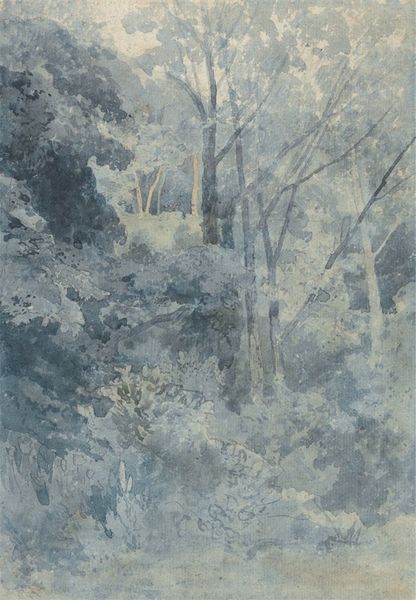
plein-air, oil-paint, impasto
#
plein-air
#
oil-paint
#
landscape
#
oil painting
#
impasto
#
naturalism
#
realism
Copyright: Public Domain: Artvee
Curator: Let's delve into Leon Wyczółkowski's "Pines at Połąga," a work painted between 1906 and 1910. Editor: Immediately, I'm struck by the muted palette, the browns and greys, and the thick application of the oil paint. You can almost feel the rough texture of the tree bark. Curator: Indeed. Wyczółkowski’s landscape paintings offer an intersection between Naturalism and the socio-political movements concerning national identity within Poland at the turn of the century. He seems intent on portraying the Polish landscape and by extension Polish identity in its natural splendor and stoicism. Editor: From a material perspective, this painting also brings to mind questions around resource extraction, doesn't it? What did the site look like before? What was involved in gathering and refining the oil-paint? Curator: Those are excellent points. Furthermore, one can observe Wyczółkowski’s reverence toward the depiction of Polish nature and also the Polish people. Looking at this scene, the artist captures something essential about Polish identity—resilience, quiet strength. There's a powerful connection to the land that resonates. Editor: And technically, observe the interplay between light and shadow created with the impasto technique. It accentuates the tree trunk and creates a dynamic, vibrant feel. You can really tell this was done "en plein air" given the thickness of the paint used. The painting is a record of that very material, embodied performance of applying paint to the canvas outside. Curator: Yes, it's not just a scene but a meditation on humanity’s role within the natural world. It asks pertinent questions, given the colonial past and cultural subjugation faced by the artist and Poland in the period of the early twentieth-century. The landscape emerges not just as aesthetics, but also resistance. Editor: For me, focusing on the material conditions, this work speaks to the commodification of landscapes through the oil that made the artwork possible, whilst still creating a powerful and affecting connection to the physical presence of this forest. Curator: Thank you for joining me today as we journeyed into the history, culture, and art. I am more informed due to your perspective. Editor: Thanks for sharing your interpretation as well. Considering the materiality and social background of Wyczółkowski’s technique only enriches our view of landscape paintings like "Pines at Połąga."
Comments
No comments
Be the first to comment and join the conversation on the ultimate creative platform.
